📺 I’m re-watching Continuum and currently in season 3. It’s a show that starts out interesting and gets better with each season. And okay it’s a bit unsettling that it was made a decade ago and feels even more relevant in 2025.
tv
📺 I finished watching Haven Season 5
Strong character-driven stories, all the way to the end of the series. I really miss when sci-fi shows were written like this.
📺 I’m re-watching Haven for spooky, fall vibes and solid sci-fi/fantasy storytelling. 😃
📺 The new episode of Doctor Who is proper creepy sci-fi and it’s Very Good.
📺 Your Friendly Neighborhood Spider-Man (streaming on Disney+)
I really like the animation style! The colors and character designs are very inline with classic comic book art.
No spoilers, but it seems like this Peter Parker is in a different universe from Tom Holland’s Peter Parker. It’s interesting to watch out for differences.
📺 Doctor Who Christmas special - “Joy to the World”
The acting was great, and the concepts were interesting. Plot was a bit messy, and the last few minutes got really sappy. That made the episode feel flat to me. 3/5 ⭐️
📺 I finished watching Black Doves (streaming on Netflix). They left an opening for a season 2 but I would be fine if this were the only season. It’s a complete story. 4/5 ⭐️ overall but 5/5 ⭐️ for casting.
📺 Currently watching Black Doves (streaming on Netflix). It has some awkward moments, but overall I like it so far.
Online community
11/9/24
This post is for WeblogPoMo AMA, a challenge to write AMA-style (“Ask me anything”) blog posts during November.
The question
Lou Plummer sent me this question:
Can you describe the online community you have treasured the most in your life online?
My answer
Being part of online communities has always been my favorite thing about the internet. When I was a teenager, I spent a lot of time in forums, geeking out over sci-fi and fantasy media with fellow fans.
The site I spent the most time on was Supernatural.tv (which is no longer online, RIP). It was a fansite and forums dedicated to the show Supernatural.
I was an administrator on Supernatural.tv from the very beginning. We launched right with the pilot episode in September 2005. I helped set up the forum structure, wrote initial content, and invited people from other fansites to join.
Because Supernatural.tv was the first fansite for Supernatural, it attracted all the fans from all over the world. At the site’s peak, thousands of people visited the forums after a new episode aired.
The forums included areas to share fanfic and fanart. I organized writing and art competitions with the moderating team. In the summers, we held awards so members could vote on their favorite aspects of the show and the site community.
Keep in mind — This was before major social media platforms were mainstream. Sharing your work in an online community was the social aspect of the web. People were not splintered across different platforms, and that helped in getting to know members and building the community. If you were a Supernatural fan, and you wanted to find fellow fans online, Supernatural.tv was the place.
I loved that community for how thoughtful the discussions were. People really enjoyed sharing theories and debating ideas. The community was so creative with all kinds of art and writing. Yes, there was some in-fighting and cliques, like any fanbase. But most of the time, the positives outweighed the negatives, by a lot.
I stopped watching Supernatural in season 5, but I was still active in the forums for several years after that. I didn’t make many lasting friendships, but the art and writing aspects of the community stuck with me. Supernatural.tv was the main community where I shared my art and writing and found people to collaborate with online.
‘Lanterns’: Kyle Chandler Set To Star As Hal Jordan In DC Series For HBO
100% yes to this 😃
📺 Kaos (mini-series streaming on Netflix)
I like that this is a modern telling of Greek gods. Cars, concerts, and cell phones, and everyone knows the gods exist. At first glance, Jeff Goldblum seemed like an odd choice to play Zeus, but he does a really good job portraying someone so powerful and so paranoid.
Watching the relationship between the humans and the gods was really interesting. Most of the gods think humans are beneath them and don’t matter, but at the same time, the gods pay a lot of attention to human actions.
I recommend watching it if you like Greek mythology. But content warning: There are a few gory scenes in every episode and when it’s gory, it’s really gory.
📺 Currently watching Terminator Zero on Netflix. I like that they aren’t rehashing stories from the movies. It’s the same universe with new characters.
Wayne Manor
4/12/23
Here’s an illustration of Bruce Wayne’s mansion (Wayne Manor).
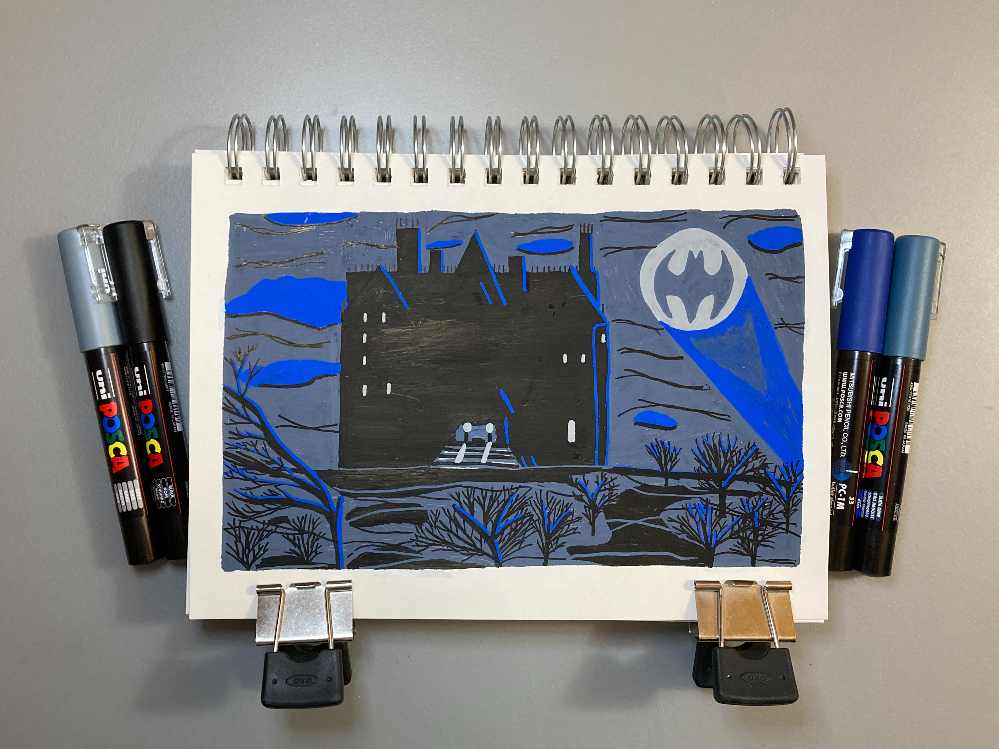
I really like how the blue highlights contrast against the black on the building and the trees.
Here’s the pencil sketch I started with.
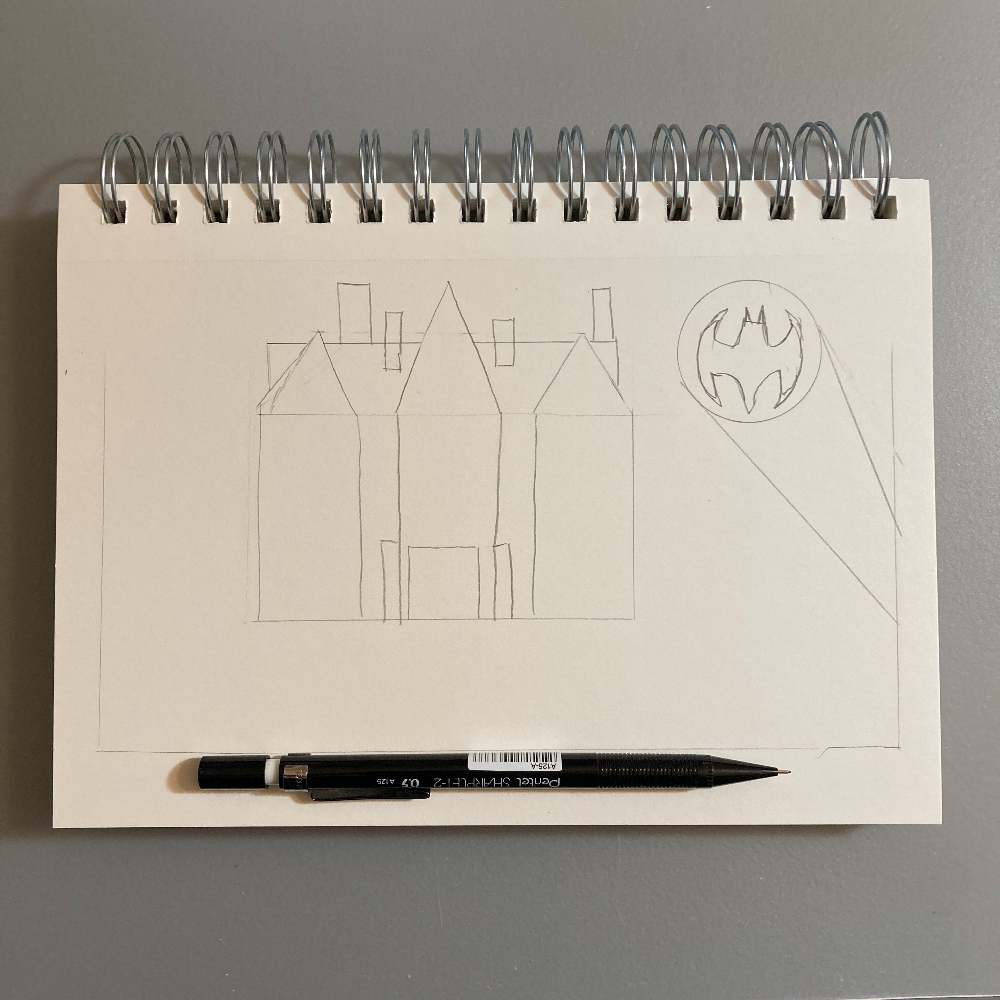
Bluth’s Frozen Banana Stand
4/10/23
Here’s an illustration of Bluth’s Original Frozen Banana Stand from Arrested Development.
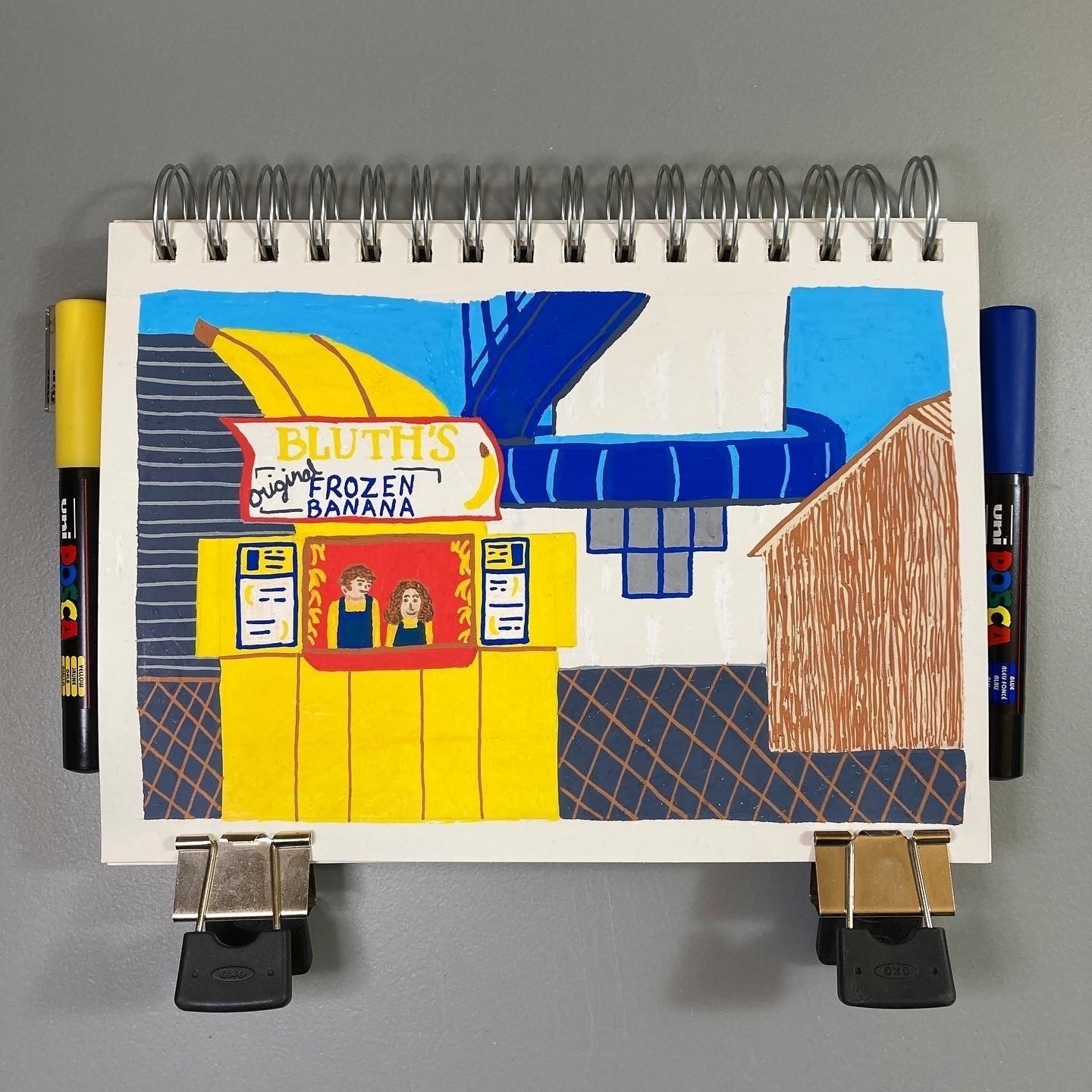
I started with a pencil sketch to draw the outline of each building.
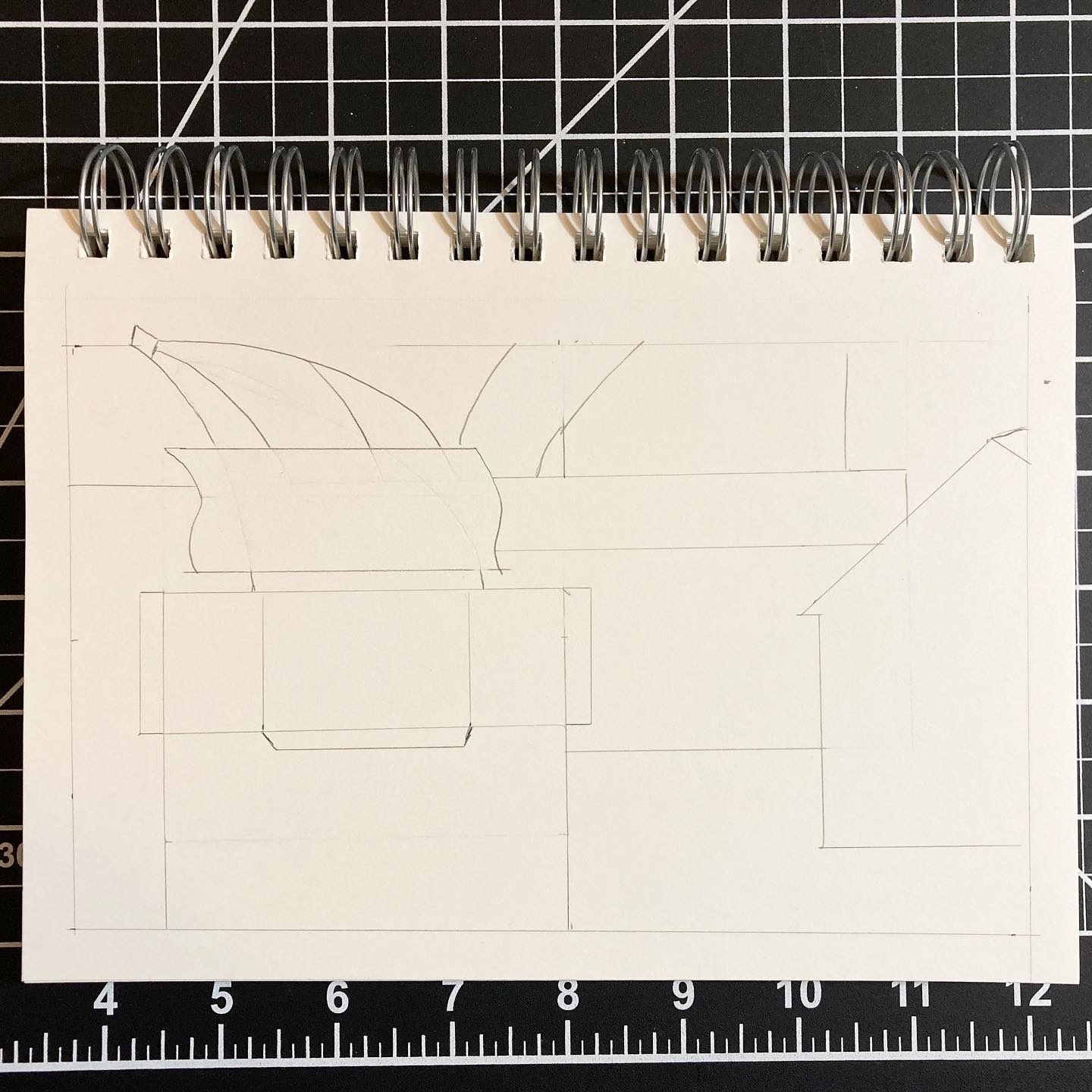
Metropolis at night
2/19/23
Here’s an illustration of the Metropolis skyline at night.
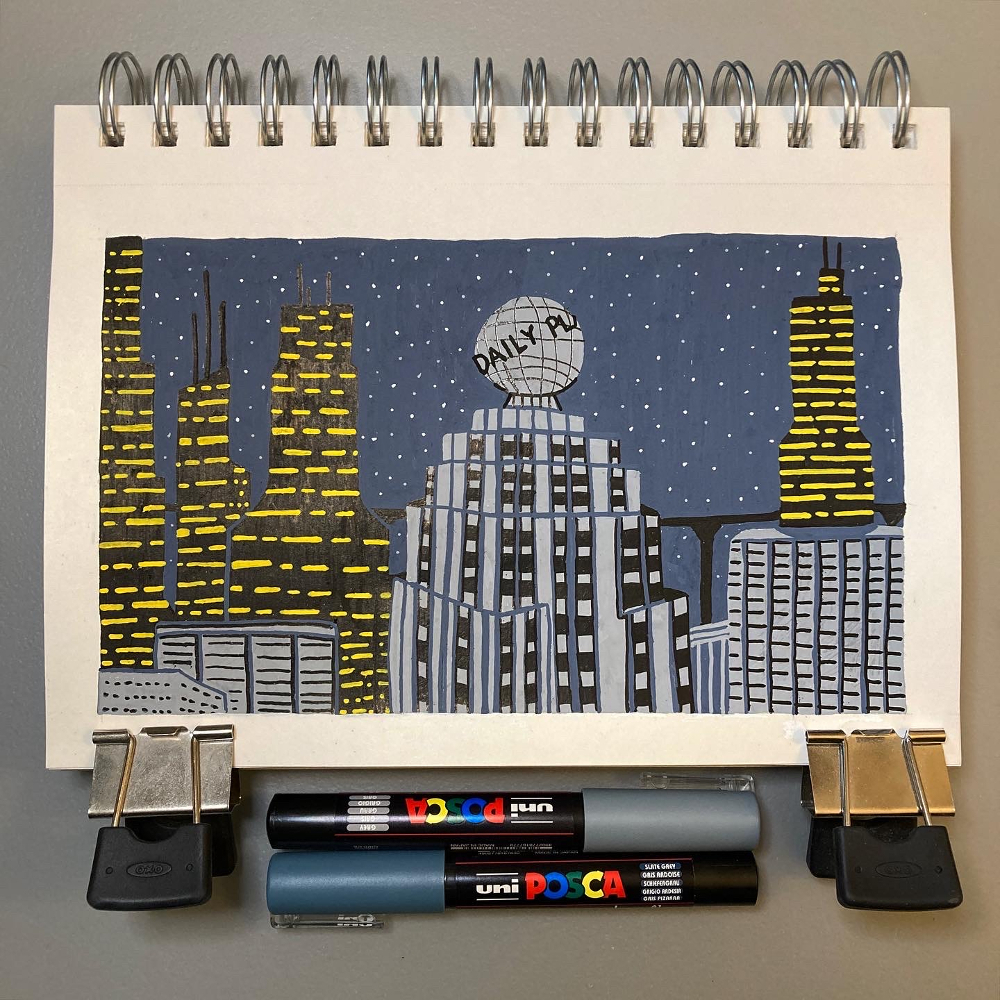
I started with a pencil sketch to outline each building.
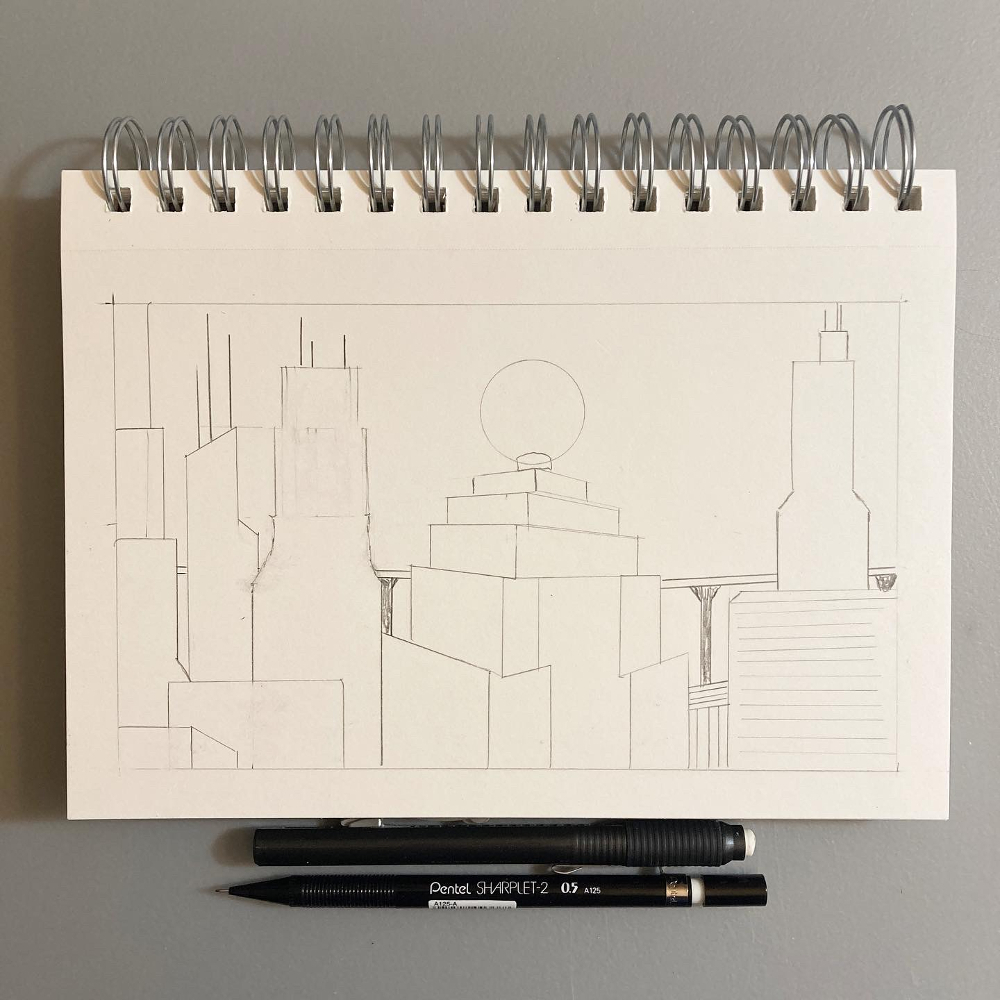
I started painting by covering the large areas first: slate gray for the sky, black for some buildings, and gray for some buildings.
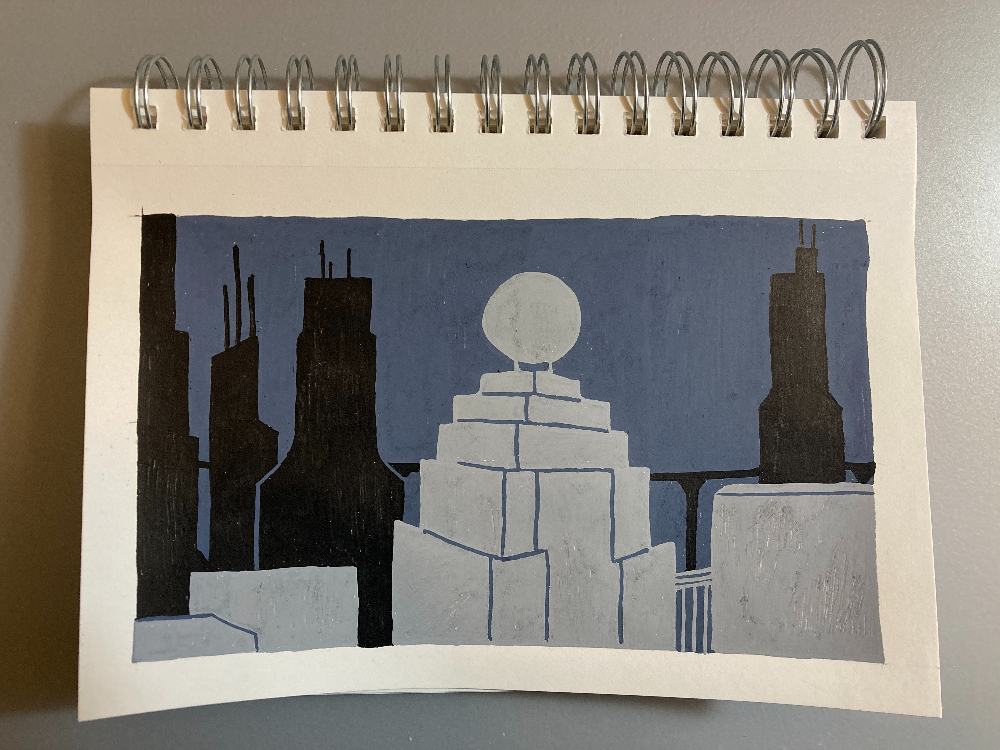
Then I added in all the details.
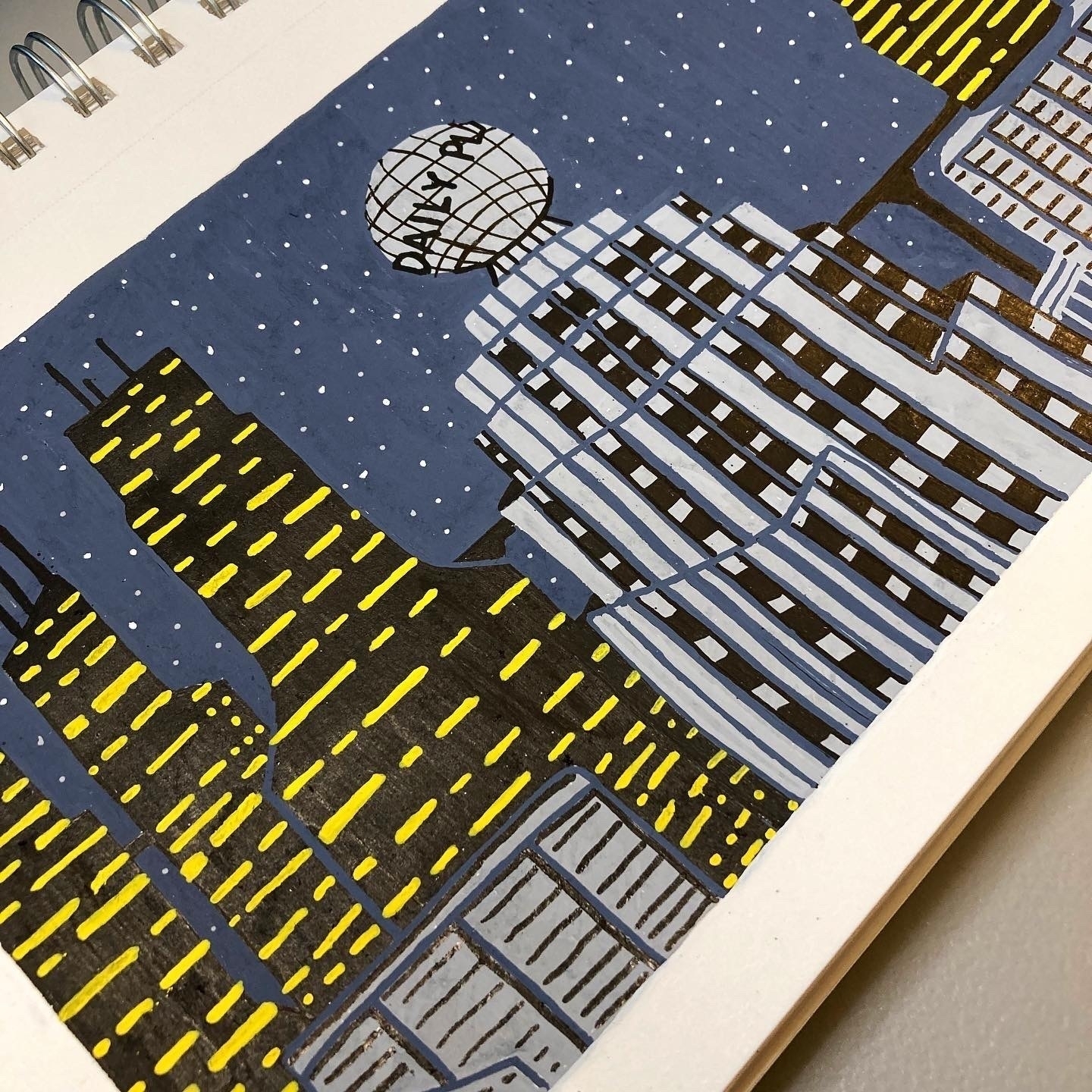
The Candy Bar from Jimmy Neutron
1/28/23
I took an online course on illustrating with Posca pens taught by James Chapman. He has posted lots of his sketchbook pages to his Instagram.
I had a couple Posca pens for a few years, but I hadn’t done much with them. I saw this course and thought it would be a great way to practice with Posca pens.
The course covers how to create a pencil sketch to get the composition down. Then it explores various color schemes to determine how to color the illustration. I especially like the challenge of limiting the number of colors used.
I like the process I learned in this course. It takes me several hours to finish an illustration, but I really enjoy the time I’m spending learning and practicing.
The course encourages choosing a theme that will motivate you to keep working on sketches. I chose places in movies, TV shows, and books. First up is The Candy Bar from Jimmy Neutron.
Here’s the pencil sketch:
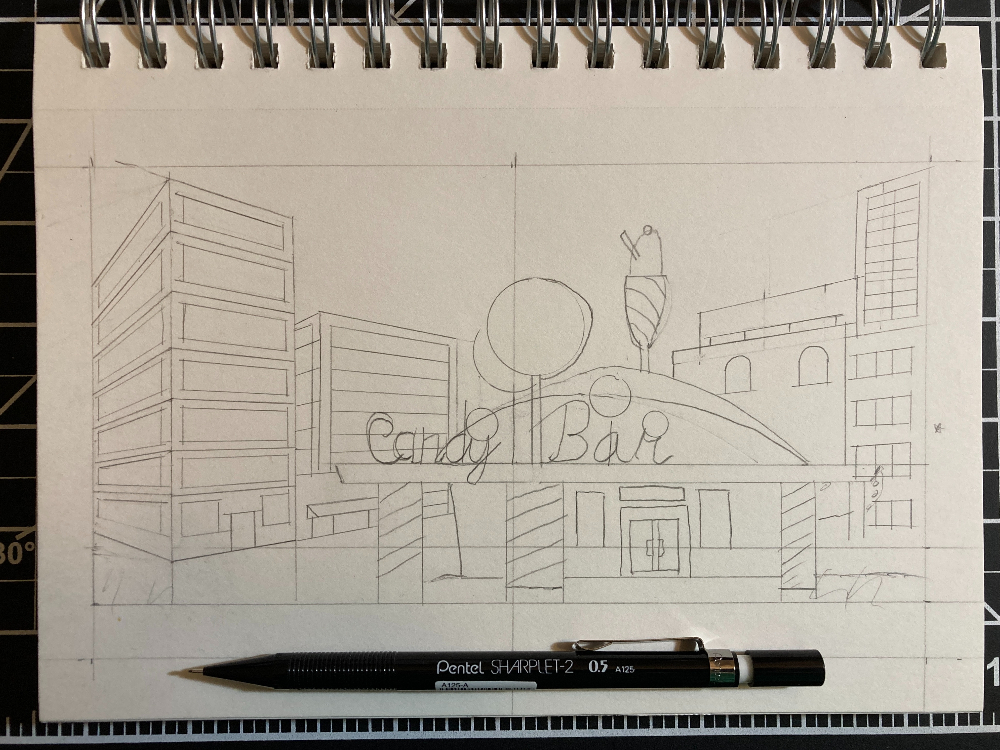
I chose to go with realistic colors, so I used Posca pen colors that are close to what this location looks like in the show.
Here’s a progress photo, with the larger areas of color done:
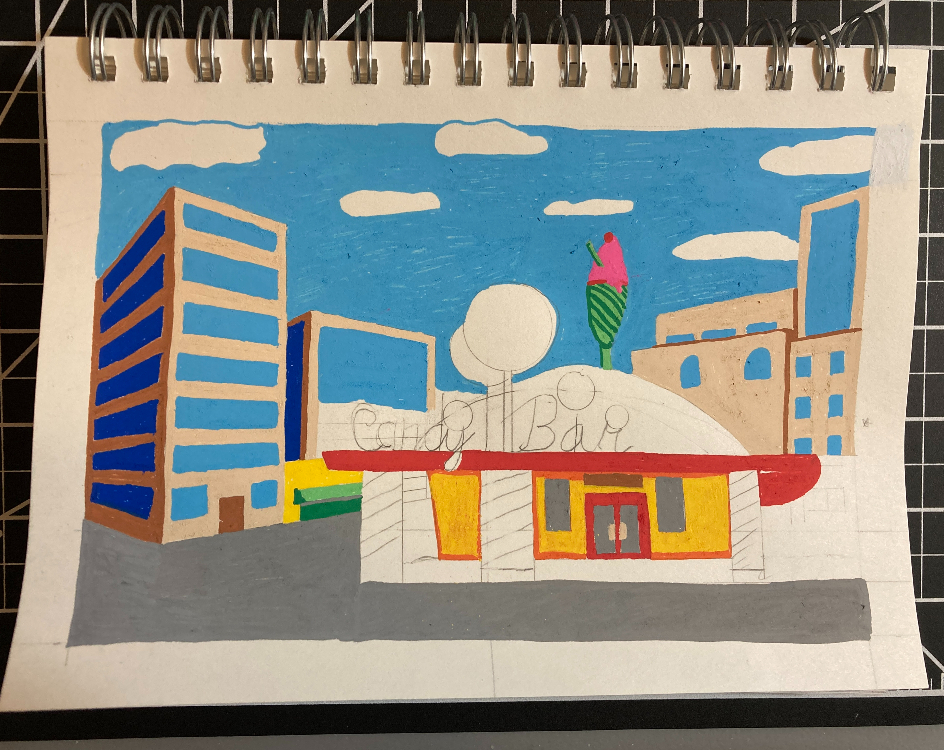
And here’s the finished illustration:
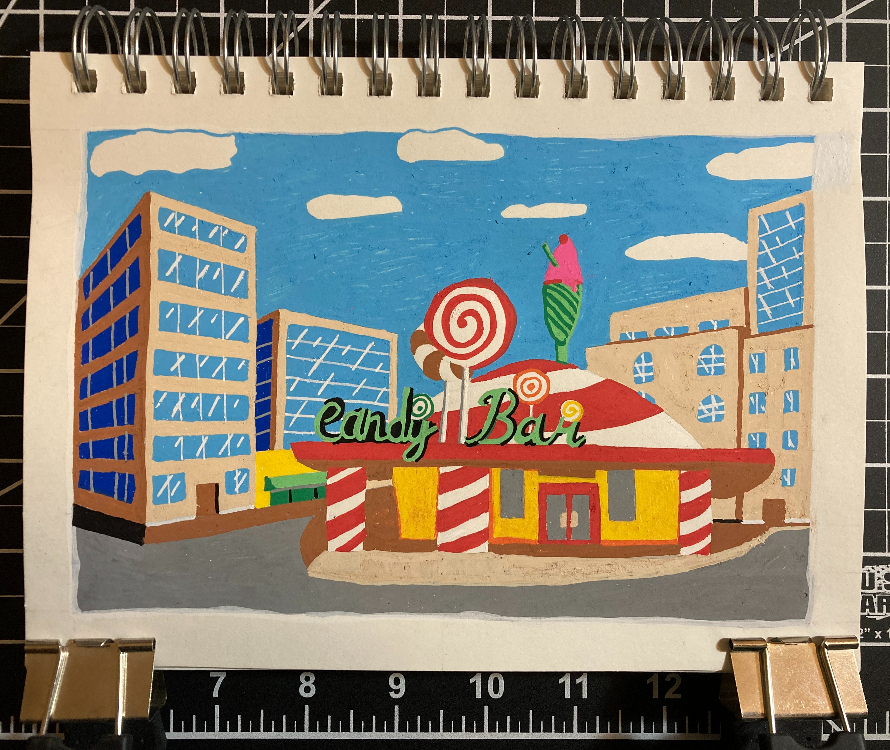
I really enjoyed making this as my first attempt at a Posca pen illustration!
Shifting through disciplines
11/30/20
I started watching Abstract: The Art of Design on Netflix. It’s a documentary series where each episode focuses on one designer and a different kind of design.
One episode is about Neri Oxman, a professor at MIT Media Lab. She leads a research team in exploring materials informed by nature. (Think: a strong plastic-like material made from proteins found in milk.)
In the episode, she talks about the relationship between art, science, engineering, and design. Usually, we think of them as four separate areas. You work in one domain but not the others. But Neri says, what if, instead, we thought of them as a circle? As a clock, where we shift from one discipline to another over time. Input from one domain becomes the output of another.
Neri uses architecture, design, engineering, and biology in her work, so it makes sense that she talks about interdisciplinary work.
A diagram displays on the screen at this point of the episode, and I paused it to draw it myself. When I see a diagram that clicks for me, I love recreating it as my way of learning.
Here’s the circle, with the disciplines each having their own domain, but now connected.
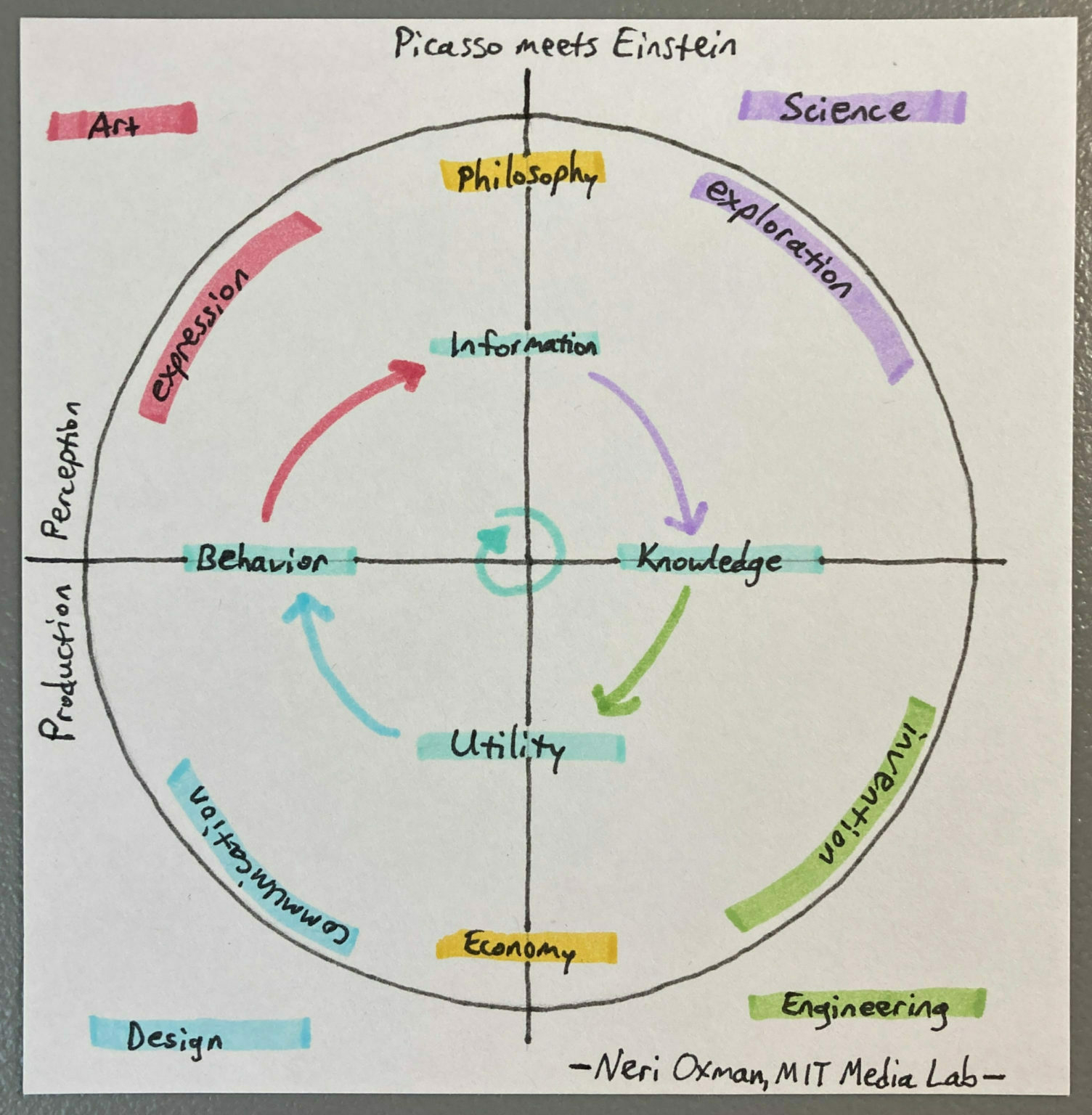
I’m paraphrasing the explanation from the documentary:
Art is for expression. It looks at cultural behavior, which leads to questioning presumptions about the world. These questions lead into science.
Science is for exploration. We gain information (input from art) and turn it into knowledge (output to engineering).
Engineering is for invention. It takes knowledge and turns it into utility for design.
Design is for communication. We take utility, give it context, and turn it into cultural behavior (which is then expressed as art).
Full circle.
Continuing with the clock analogy, Neri says that at the midnight position, that’s where art meets science, where Picasso meets Einstein.
I love this model because it shows the value of these disciplines working together. Rather than limit work to one domain, you can shift through domains (with a team…no one is an expert in all four areas) to create a full understanding, exploration, use, and expression.